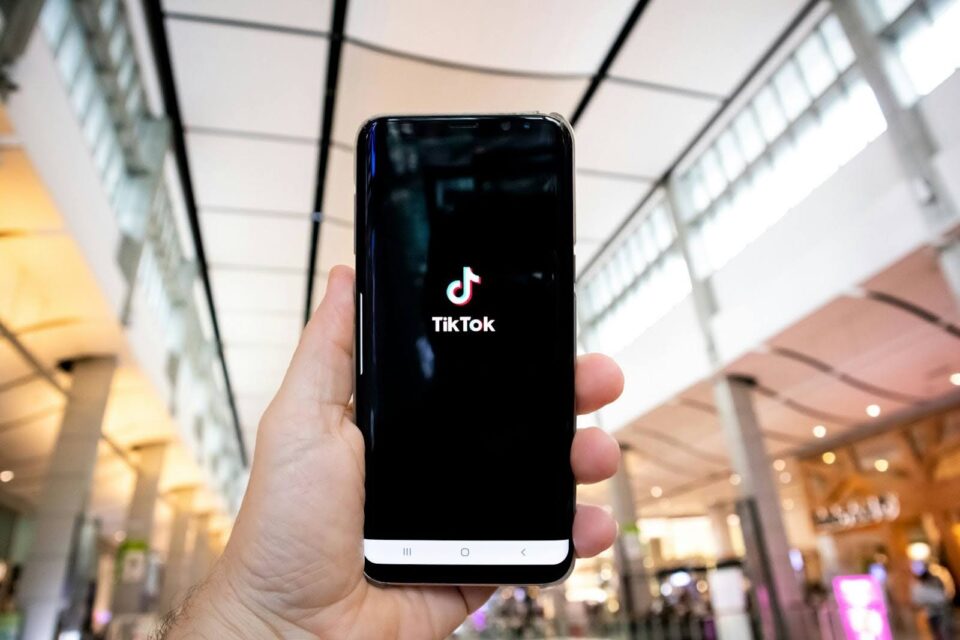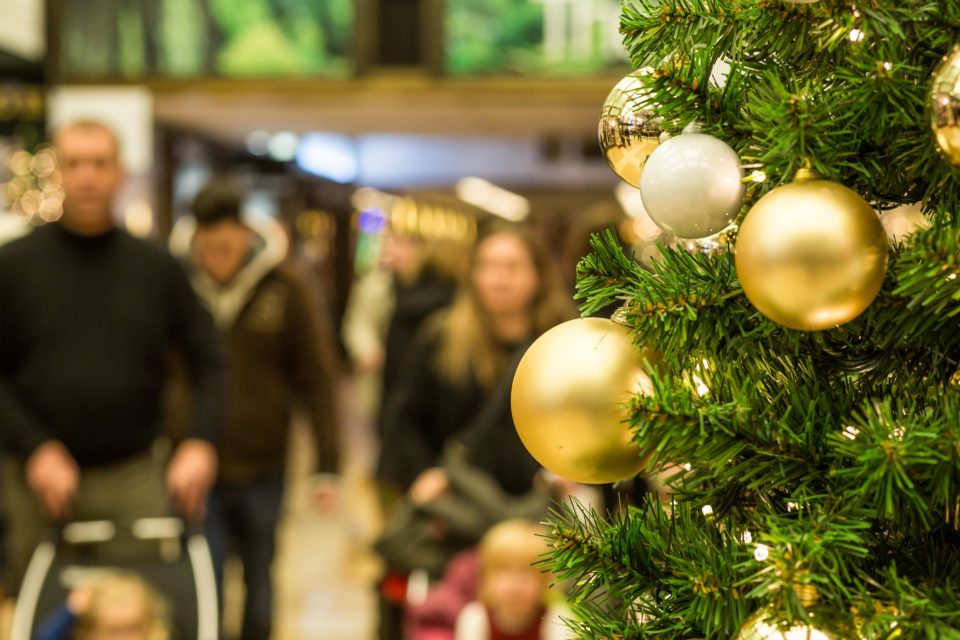Convenience gone smart: why Stockwell is putting the store in the hands of shoppers
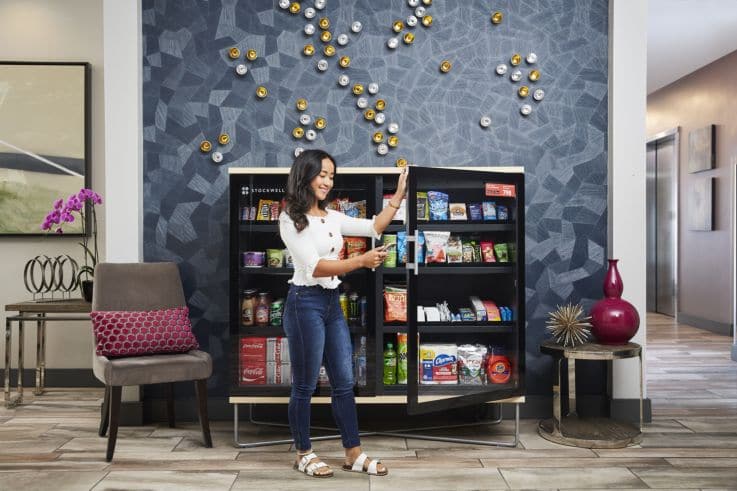

The average retail store model invites customers to come to a certain location to shop from a range of products chosen for them. Stockwell completely flips that thinking.
It puts its small-format units (also known as stores) into the spaces that people are and gives them control over what is for sale inside. It focuses on offering total convenience, including an app-based automated buying mechanism. And it’s outperforming everyone else in the process.
We spoke to CEO Paul McDonald to find out how the concept is changing the face of convenience, why the model presents an opportunity for D2C brands, and how the future of retail is localised and personalised.
Paul McDonald, CEO, Stockwell
Can you describe Stockwell in a nutshell?
We’re trying to build a new type of retailer from the ground up. Our main goal is to create these automated stores which we place where people already are, where they live and work and play. We own everything end to end, so we build the stores, we write the software, we do all the retail pieces and all the fulfillment pieces.
The thing that makes us really unique is that we use computer vision and machine learning to track what goes in and out of our cabinets (which we call stores). The idea is that a consumer can open the store, take the thing that they need out, close it and we’ll automatically charge them for the items that they’ve removed without them having to actually do anything.
It’s very much a retail experience, but we’re bringing the store to where people are. We’re not trying to attract them to a central location. We’re trying to put these everyday essentials within a hundred feet of where you already are – apartment building lobbies, college campuses, offices, gyms and hotels.
We’re also using our consumers to help us curate what’s in the store. When a user uses one of our stores, they can request items and the next day those items will show up in the store. Each store becomes unique and a reflection of the community around it over time.
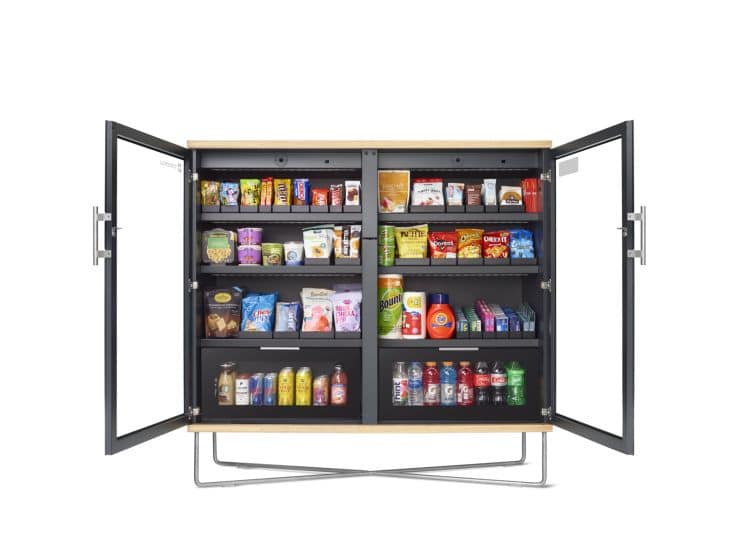
How many units are in operation?
We have thousands of them in the US in four different cities – San Francisco, Los Angeles, Houston and Chicago. We’re expanding and growing like crazy. We’ve 10x’d our footprint over the last 12 months and will expand into all the major metros in the US in the course of a few years.
How many items can fit in each unit at the moment?
We can fit about 60 to 70 SKUs in one of our stores. They’re five feet wide and the same tall, and then two feet deep. Each one of the SKUs can have between 10 to 15 individual items packed in its row.
How many SKUs do you have in your inventory?
We have hundreds of SKUs to choose from. There is some overlap between each of the stores, but for the most part we have the things that people want and need for each vertical that we offer. Depending on the location we have different types of household goods, diapers, sexual health, feminine hygiene, different types of chargers or medications.
In an apartment building, we have about 50% food and beverage, and then the rest of it is home goods, like detergent or paper towel or toilet paper, or over the counter medication or small electronics. It’s solving that need at those times when you absolutely need to have something right away or you have a regular purchase behaviour for these types of products.
There are all kinds of interesting differences between the individual locations. In some communities there are certain socio-economic differences between the types of products that they buy and the pricing expectations.
If consumers want something that’s not in our inventory, we ask the other consumers in that location if they want it in their store and if enough people do, we source it and put it in.
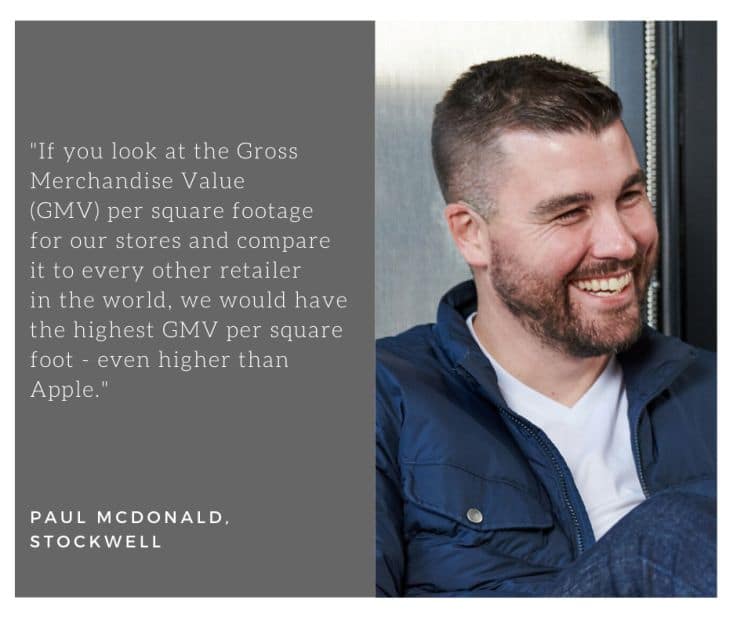
How do customers access the stores?
Each of the stores has a three- or four-digit code associated with it. You open the app on your phone, enter the code to open the store and that ties your phone to the store that was opened.
We’ve tried lots of different things around automatically opening the stores when people get close to them, but it turns out people actually want the control of opening it themselves. We save the last code that you use for the store, so for the most part after the first time you do it it’s just pressing a button and it opens up.
How does pricing compare to a traditional convenience store?
We price our products at the same prices that you would see in a retailer like CVS or Walgreens or Kroger.
Is there a particular type of space that you’ve found has responded really well to the units?
The majority of our stores are in multifamily residential or apartment buildings.
We made the stores look like a piece of furniture so that the property owners or managers are willing to put it in high traffic areas. That’s really the thing that makes it work is that people are walking by it every day.
The design is really important to us as a company. We’re trying to remove the technology from the look and feel of the store and make it more like a retail experience where you’re taking something off the shelf. You shouldn’t have to interact with the technology unless it’s necessary. That’s part of the magic of what we’re doing and the experience that people love using our stores.
Are there any restrictions on what type of space can install one of your stores?
We will put them anywhere where there are enough people and enough foot traffic.
Are there at least the minimum required number of people for us to maintain the store and have it perform well? Is it in a well-lit area? Is there a lot of foot traffic? Will the property owner or manager tell the consumers about the store?
If we can get those things, then we can put the stores anywhere. It makes it really flexible for us and the market is very large for these types of stores.
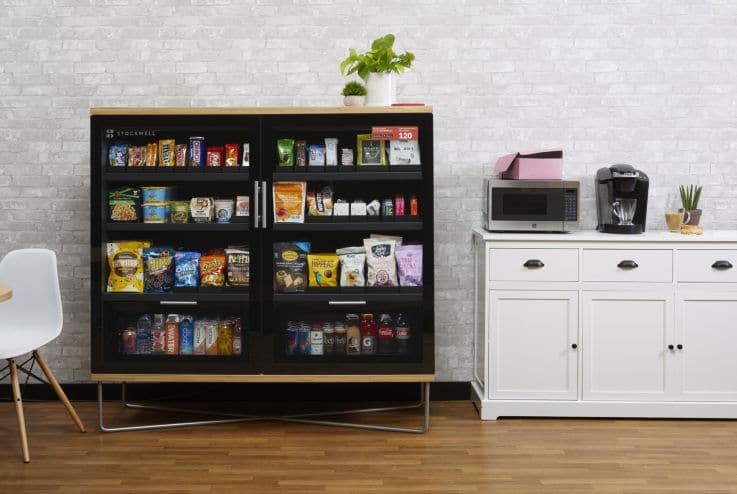
Have you found that there’s a particular type of customer who has responded really well to the units?
It’s funny because you would think that there are specific types of people that would want to use it like younger folks or people more focused on technology. But it turns out that everybody has the same requirement for last-minute impulse needs-based things.
For example, in one of our apartments we have an elderly woman who has a walker, so she can’t really get out to the store. She comes down every morning with her dog to get her Starbucks Frappuccino’s and pasta or peanut butter or paper towels or toilet paper. It’s really solving this very specific need for her.
We see that with all kinds of different folks. The kids in college are up late at night and none of the stores are open around them so they can get their school supplies or a charger or headphones. We also cater for people who can’t leave the office to go get a snack or a meal replacement.
We see all these different sorts of use cases. It tells us that there’s a huge potential market for this service in the places that we’re in.
How much do you consider Stockwell to be rivalling traditional convenience or grocery stores?
I think it’s a supplement. There are things that we won’t ever be able to provide in our stores because we have limited space, there are no people there, there’s no community around it. What we’re trying to do is supplement the behaviour of our customers and provide a service for them in that moment when they really need things, and either can’t get out or don’t want to go out to the store.
When you look at the retail landscape today your see traditional brick and mortars trying to replicate the services of the large ecommerce companies like Amazon. The way that they’re doing that is they’re essentially copying what Amazon is doing in trying to deliver goods to people as quickly as possible.
That is a very difficult logistical challenge, but also for the customer is sort of a letdown. If you need something you have got to wait at least an hour to get it. What we’re trying to do is rethink retail from the ground up.
We create a wedge by making it easy for the consumer to get the things that they need by walking a hundred feet. But our stores are just shelves; we can put anything that we want on them.
I think the future of retail is providing a way for brands to get in front of consumers in their homes, in their offices, in ways that they didn’t really have access to the consumer before, and the consumer can discover new things through that method. I think our stores will serve as a platform for doing that over time as we scale.
How does your system perform compared to a traditional convenience store?
If you look at the Gross Merchandise Value (GMV) per square footage for our stores and compare it to every other retailer in the world, we would have the highest GMV per square foot – even higher than Apple.
It’s not quite comparable because we don’t have these huge stores, but they’re doing so much volume it actually works out to be higher annual GMV per square foot than any other retailer in the world.
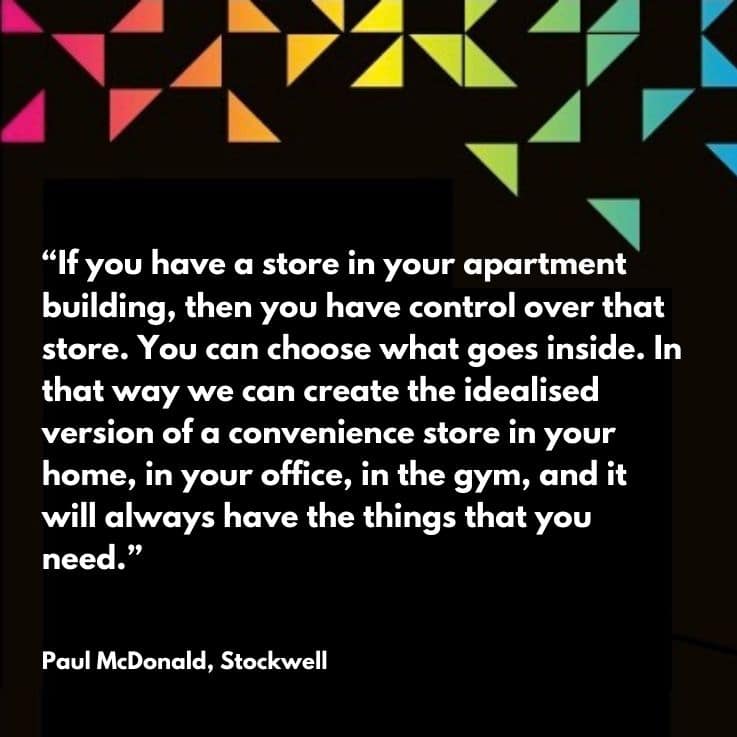
Do some brands pay you to be stocked in the units?
We’ve been working on several pilots that can help brands get in front of their target consumer. The only way that a lot of direct to consumer brands today have to get in front of a consumer is by buying media and attracting people to the website. A lot of these brands are running out of room in terms of the people that they can attract and so they’re trying to get into physical retail so that they have a presence when people are out shopping.
We’re trying to provide a way for them to do that. We’ve been piloting with a bunch of brands to do shelf takeovers in our stores to do promotions of their products, and we do the distribution for them into the stores. It’s the physical world equivalent of direct consumer that we’re trying to offer.
Traditionally in retail for a small CPG it’s a really challenging path to distribution. You have to go to a buyer; you have to get a buyer to accept your product and pilot it in store and then go to a bunch of other stores.
We imagine a world where you come to our website, you choose an audience that you want to target, we show you all of the places where we have those people and give you a way to bid on shelf space in our store.
You can send us your product, we’ll put it in our stores and then promote your product to the end consumer essentially cutting out the buyer in a traditional retail environment and allowing brands to go directly to consumers. You can take a small local brand and make it a big national brand by using our retail footprint across the US and hopefully globally at some point in the future.
Is it a challenge to balance what each micro community needs versus the brand sponsorship?
I think that is a challenge where there’s limited space.
I worked at Google for a long time before starting this company. In Google we have advertising on google.com, but not every single ad that people want to promote shows up on those pages. Essentially, there’s a quality score that we associate with the ads and what people are searching for.
We think about the same thing with the products that we want to put into the stores. We assign a quality score to the experience of having that brand in the store. If it meets a threshold, we’ll continue to do that.
If it turns out the consumers don’t want it, then there’s no use in putting it in that store. That’s part of trying to understand how consumers are perceiving that brand and how they’re buying and then expanding or shrinking the size of that promotion based on that.
Do you have plans to change the type of goods you can stock?
The shelves in our stores are just regular shelves. We can sell anything that we’d like from electronics to watches to apparel and consumables.
Each shelf is modular, and we can build any form factor that we want by stacking the shelves. This includes refrigerated versions of the shelves. Around 50% of our stores today are already refrigerated, but we’re mostly using it for beverages. We don’t have a cold chain for fresh goods right now. That’s something that we may explore in the future.
Would you ever add a function for customers to search for a product and see which stores have it in stock?
I think where a lot of retailers, at least on the outside, go wrong is they’re trying to tack on technology to their existing model of attracting people to a particular store and trying to curate an assortment to bring people into that store.
What we’re trying to do is a little bit different, which is you only use the stores if they’re already in the places that you are. There’s not really a concept for us of trying to find a store that has a particular set of goods.
If you have a store in your apartment building, then you have control over that store. You can choose what goes inside. In that way we can create the idealised version of a convenience store in your home, in your office, in the gym, and it will always have the things that you need.
By doing it that way we actually solve this last mile logistics problem by putting the goods that people are buying all the time in the places where they already are and making mini distribution hubs all over the community. You’re not looking for a store to go to; you’re changing the store that already exists.
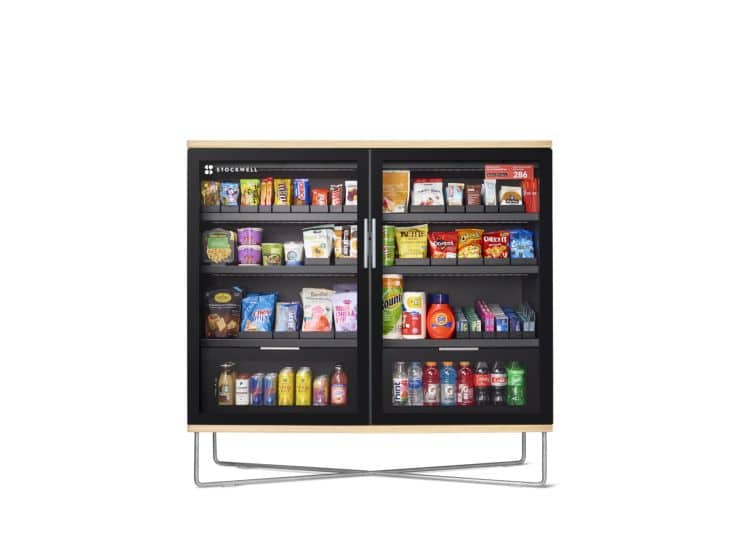
What has been the biggest thing you’ve learnt since launch?
There are three main things.
We didn’t come from a retail background. Many of us come from Google and are trying to apply a lot of the technology that we were working with in computer vision and machine learning into the retail space. What became obvious right away was that this in the moment need is still a huge pain point for consumers. That’s the value that we’re providing.
The other thing that we learnt was that retail is actually pretty hard compared to a software business – dealing with physical goods, with logistics, trying to get the right assortment into a store is hard.
We’ve thought about these problems from a different perspective, which has allowed us to rethink what it means to be a retailer. I think traditionally retailers are great at finding the perfect assortment to attract people into their store, and we just turned that on its head to put the store where people are and let the people tell us what they want in it.
Looking at all of the technology that we’re using, not only in the computer vision and machine learning, but all of the software we built for logistics, allows us to rethink how retail exists in the physical world. Most people see two channels for retail today – the old school brick and mortar companies and the new ecommerce companies. We see a middle path.
We can own supply chain and logistics and aggregate demand like a brick and mortar company can, and we can have a really amazing user experience, connect the consumer to us through an app, provide personalisation and services on top and connect brands to consumers in a way an ecommerce company can.
How have the stores adapted since you first launched?
We’ve created this network of thousands of stores that are interconnected through the software. Maintaining a large network of these connected stores is difficult at scale.
We built a bunch of software to understand the store’s current state, what the real time inventory is in each one of those stores and so on.
There are mechanical moving parts on the store like doors and locks. Those things break down over time and we’ve had to redesign some pieces of it so that we have fewer of those issues.
There are also people who are trying to trick the system or are fraudulent in one way or another. We’ve learned from that over time and improved the mechanisms, both in the camera views to make sure we have right angles of what people are taking off the shelves, and also some of the security mechanisms to keep people out of the stores when they don’t have access to them.
Between those three things, we are now in a place where we rarely have to go visit a store or touch it to fix any problems. It’s a very robust system.
How are you planning to build on the concept next?
We own and operate these stores and stock them ourselves. We do that because we want to create this really great user experience where consumers can help us curate the store and create a selection for them and their community.
In the long run if we want to scale this and be ubiquitous, we need to partner with other folks to help us do that.
We’re building a suite of products to allow third parties to run the stores on our behalf and have the same sort of experience that we have for our consumers now. In terms of the future of the fulfillment, I think it will partly be us in the future, but it will also be a set of partners who want to start to build their own customised stores for either their own products or their communities around them.
We built a ton of technology to make the people part really efficient. The unseen piece of this business is all the software that we’ve built from the ground up.
It started with a fresh set of eyes looking at retail and the entire supply chain from buying and sourcing to delivery and warehousing. We’ve built custom software around all of this work which has made us one of the most efficient operators in terms of stocking and fulfilling stores and warehousing today.
We believe that the future of retail will look a lot different than what exists today where we can make very personalised, localised decisions as to what to stock in stores which are where consumers already are. That’s the vision that we have and we’re excited to continue to be growing and take on these challenges.
Are there any other businesses that you’re impressed by at the moment?
One is goPuff. They are essentially delivering the types of goods that stock in our stores to consumers in 30 minutes.
They are really focused on the consumer and trying to get them exactly what they need as quickly as possible. They essentially own tens of tiny warehouses all over a given city and when an order comes in from someone in that city, they route it to the right warehouse and immediately send a person out there
The way that they’ve done it is just mind blowing to me and speaks to the same sort of vertical integration that we think is important.
Another one I’ve been fascinated to watch is Ocado in the UK and their automated warehouses. I’m blown away by the thought process that went into designing the robots and the grid systems that they have in the warehouses and they now seem to be working with other retailers to outfit their warehouses. I think this is where things are going in the future.
There’s also a company called Traptic who started around the same time that we did but using computer vision and robots to pick fruit. This is actually a very difficult manual labour task. The issue with fruit is that you have to be very gentle in picking it and they’ve created a way to identify the strawberries with computer vision and a picker that is very good at picking the fruit and keeping it undamaged.
They’ve been working with farmers across California to do that and that has allowed them to pick day and night and solve some of the labour shortages that we have here.
Images courtesy of Stockwell

